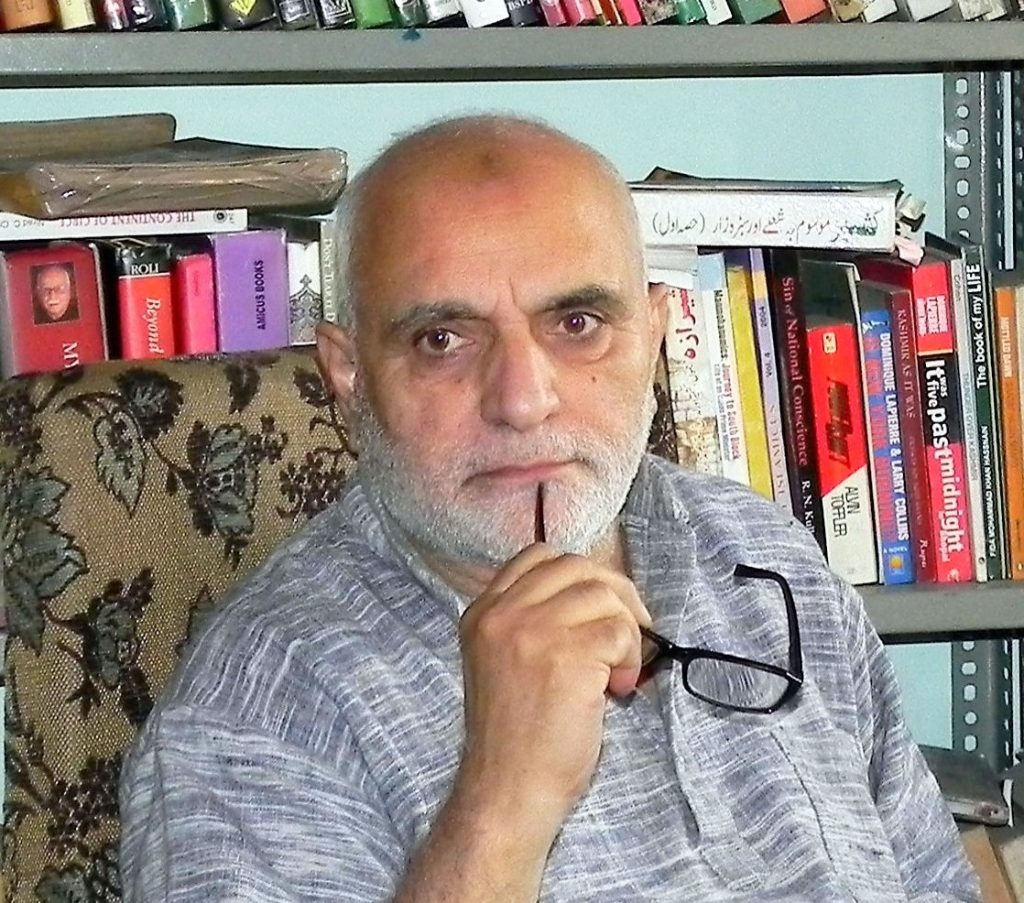Peace Watch » Kashmir-Talk » Story of Downtown Boy Review
Story of Downtown Boy Review
Author: Zahid G Muhammad

Srinagar: The City of Resistance and Culture, Story of Downtown Boy
Author: Zahid G Muhammad
Publisher: Gulshan Books, Srinagar, Kashmir
Year of Publication: 2016
Pages: 474 Price: 1295
ISBN: 9788183394383
Reviewed By Mushtaq Ul Haq Ahmad Sikander
Srinagar has the distinction of being a very vibrant city centre. In Srinagar, too Downtown a term that now raises many eyebrows as the term downtown carries a very negative connotation has been a dynamic area. But the author of the book, a versatile ‘proletarian’ historian who has the distinction of documenting peoples history Zahid G Muhammad prefers to call himself a downtown boy. Downtown for most Kashmiris is the area that refers to the old city or Shahre Khass. Today this area can be notified as to the one that falls under the jurisdiction of seven police stations where restrictions are imposed regularly by the state to curtail people’s movement.

The present book under review is an intimate personal history of noted peoples historian and columnist Zahid G Muhammad. He has the distinction of documenting the everyday life and peoples history of Srinagar. This book seems to be another one in his series of books because previously Srinagar: My city, My dreamland has been published again reflecting on the complexities of Srinagar. So why Srinagar becomes an important place that needs documentation, analysis and record of its events become clear as one takes a journey through the pages of the book. The book is divided into seven parts, reflecting different facets of Shahre Khass through the eyes of Zahid.
In the Prologue to the book, Zahid reflects about the inheritance he as a Kashmiri received from his forefathers, “For having inherited this great tradition of resistance against injustice from our elders our generation owes all vibrancy that runs through our blood to our fathers and forefathers. Fighting, with courage, the coercive and arm twisting tactics of the fanatic rulers and their hanger on’s they preserved the social fabric of Kashmir society and defended their monotheistic faith that teaches love and piety. Safeguarded hospices, mosques, astanas and their religious places” (P-iv). Zahid, given this inheritance, considers himself to be a child of conflict. The turmoil around his birth, growing up in a congested area, and schooling, myths about owl nail, moths and amulets were all a part of his childhood. The Bihisti, waterman who used to sprinkle water on the kuccha roads would never be experienced by our generation. The homemade treatments for common ailments, his dream of owning a bicycle and his political baptization even before he was enrolled in a school. These events make one remain glued to the book.
“I was politically baptised before I was admitted to the kindergarten. It is not hyperbolic but a reality; a reality that you might have lived. Yes, I was politically baptised before I had learnt to make beautiful tiny paper boats and to floating them in the drain outside our home that after travelling some eight hundred meters discharged in the Mar Canal” (P-185). The political discussions and its intricacies seem to have been a part of his childhood, a tradition that continues in today’s Kashmir. The political discussions at shopfronts known in local parlance as Panjey Siyasat and its role in political grooming of youth cannot be underestimated. These shop fronts were playing the role of universities where common people got to know a lot about politics. There were a number of people who were exiled for their political beliefs. There was in place a ban on listening to the radio station of one’s choice. It was more about switching and listening to Azad Kashmir radio stations, but today this ban seems to be horrible and uncivilised.
Zahid’s childhood, adolescence and youth are full of adventures as he takes the reader down the memory lane. The writing tools of students during his school days will appear quite antique today. The tradition of learning Quran from a lady teacher of the locality known as Oaatanji must have been a novel experience. Imploring education was not without its struggles because the Hindu-Muslim divide did reflect there too. “Considering Muslims as impure, some teachers not only preferred to eat food away from the gaze of Muslims but kept a distance from them, their belief was a touch with Muslim makes them impure. Nonetheless, there were some progressive teachers who were committed to the cause of spreading education across the religious divide”. (P-116)
The politics seem to be an integral part of Zahid’s life as that of any Kashmiri. Zahid talks about Mujahid Manzil, its vibrancy and then its retrogradation. He reflects how common people used to Hero worship, political leaders. The pictures of jailed and exiled leaders used to be symbols of freedom and resistance; even the Pakistani dictator Ayub Khan’s snaps were sold in Kashmir. A social boycott of people was also in place because of their political beliefs. There were also hordes of snoops, spies and informers who helped the state to torture, detain or arrest any political dissident under the draconian Preventive Detention Act (PDA). The dispute over Kashmir impacted the daily affairs and routines of people as we witness that people in Srinagar used to sleep on terraces during summers, but 1965 summer was different as a war between India and Pakistan halted this practice.
Zahid does not just deal with politics, but common mundane affairs are described quite vividly like marriages, customs associated with it, their history, eunuchs, bridesmaid and recitation of Quran by the new bride before her in-laws. The folk singers (ladishah) and their role in transferring the pain and Kashmir narrative from generation to generation are documented too. In those days songsters who sang and sold songbooks in Shahre Khass was commonwhile Khanyar was a bastion of poetic and folk music concerts. But Zahid laments over the fact that “The cultural invasion that we have suffered has not only snatched from us our folklore but even those beautiful rhymes full of prosody, cadence and rhyme have died-perhaps never to be revived” (P-65).
Associated with the cultural invasion is the dress pattern, caps, Kasabas, turbans that now are redundant. Even Pheran and other traditional dress are being discarded; Spinning wheel a craft that mostly women indulged in is now on the decline too.
Zahid talks about his childhood excitement of visiting Dal Lake as a child, unlike today children, were not glued to Tv and mobile screens. He gives a vivid description of how Dal connected to different areas. He talks about the different games that were played during the summers and rainy season. Religious rituals were a part of local traditions, as is reflected by Naat Khaans and Ramadan. Moharram came with its festivity, and even Sunnis joined the processions. Hajis and Hajj pilgrimage had a halo associated with it so had the shrines their share of stories like Leopards visiting them.
Zahid talks about an institution like daily newspaper Aftab and its legendary editor Sanaullah Bhat and how he has the distinction of producing writers. His reflection about hubble bubble locally known as Jajeer being socialism incarnate is indeed a great observation because it recognises no status, stature, class and allowed the nobles and paupers, aristocracy and artisans and patricians and peasantry to enjoy a puff of smoke with equal equanimity’ (P-363). He time and again talks about the prevalence of love among people that is missing today.
M.H.A.Sikander is Writer-Activist based in Srinagar, Kashmir and can be reached at sikandarmushtaq@gmail.com
This book is marvellous in understanding the daily lives of inhabitants of Srinagar. It is a living testimony of the fact of how times change and is nostalgic about the loss of good in shahre khass culture. It is recommended for anyone interested in the people’s history of the area. Given its vast canvass and the issues documented, I fail to find a mention about the love lives of youngsters. The blooming love relations between young boys and girls, how they used to express love, the inhibitions and success stories. I hope the author will grant us a sneak in the love lives of the youth of his age soon in his next book.

Filed under: Kashmir-Talk







